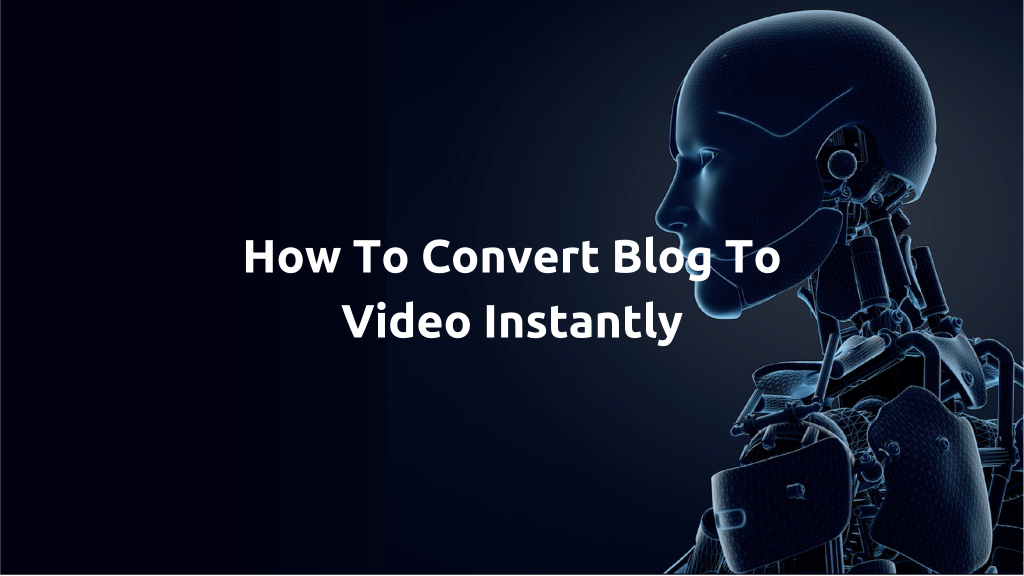
Turning your blog posts into video is a great way to repurpose your content and reach more people across multiple channels.
It can be a time consuming task, but by utilizing the right tools, turning blog into video can be done fast and efficient.
In this guide, we will share the top 3 AI tools for turning blog posts into videos, and how to do the process.
Turning Blog Posts into Videos: A Step By Step Guide
At its core, content creation is about repurposing your ideas and making them accessible to your audience in multiple formats.
One of the most effective ways to do this is by turning your blog posts into videos.
Not only does this provide an alternate way of presenting your content, but it also enables you to reach a wider audience who may prefer video content to text-based content.
In this guide, we’ll show you how to turn your blog posts into engaging and informative videos.
Best AI Tools To Convert Blog To Video
With all the available AI tools today, you can easily convert your blog posts into videos instantly.
This allows us to 10x our content output and keep posting content on all social media channels consistently.
Here are the top 3 AI tools to convert blog posts into videos:
Generate short, brand-focused, and easily shareable videos from your lengthy content automatically.
Effortless, economical and no technical expertise or software installation needed.
Create short branded videos from long-form content, turn sales scripts into video content in minutes, transform your blogposts into videos, and add caption automatically.
With InVideo you can produce professional-grade videos from the get-go.
InVideo makes video creation easy thanks to its user-friendly templates that can be easily personalized, even for those with no prior experience.
Start creating stunning videos that are publish-ready from day one.
Using the AI-based Text-to-Video editor from InVideo, you can quickly turn any script, essay, or blog post into a video.
SpeakAI lets you convert your blog into videos in just a few clicks.
Just upload the video directly from URL or a file and get text transcription automatically.
Get valuable insight and data from your videos and text, and easily make better decisions based on data.
Why Turn Blog Posts into Videos?
The first question you might have is: why bother turning your blog posts into videos?
The answer is simple: it helps you reach a wider audience.
According to a study by HubSpot, video content is the most popular form of content consumed by internet users. In fact, more than 50% of consumers prefer video content over any other type of content.
By turning your blog posts into videos, you’re able to tap into this large audience and increase your reach.
The Benefits of Turning Blog Posts into Videos
Aside from increasing your audience reach, there are several other benefits to turning your blog posts into videos.
First, it helps to make your content more engaging. Video content is often more immersive than text-based content, making it easier to capture and maintain your audience’s attention.
Additionally, videos are shareable, which can help increase the visibility of your content.
How to Turn Blog Posts into Videos
Now that we’ve covered the why, let’s dive into the how.
There are several steps involved in turning your blog posts into videos, but with the right tools and approach, it can be a relatively straightforward process.
Step 1: Choose Your Blog Post
The first step in turning your blog post into a video is to choose the right post.
Not all blog posts are created equal, and some may lend themselves better to video than others.
Look for posts that have a clear narrative structure or a series of steps that can be demonstrated visually.
Step 2: Write a Script
Once you’ve chosen your blog post, it’s time to write a script for your video.
The script should follow the same structure as your blog post but should be adapted for a visual medium.
This means including more visuals, animations, and other elements to make the video engaging.
Step 3: Choose Your Video Creation Tool
Step 4: Create Your Video
Once you have your script and your video creation tool, it’s time to create your video.
This involves adding visuals, animations, and other elements to bring your script to life.
Make sure to keep the video engaging and visually interesting to maintain your audience’s attention.
Step 5: Promote Your Video
Once your video is complete, it’s time to promote it. Share it on social media, embed it in your blog post, and include it in your email newsletter.
The more places you promote your video, the more likely it is to be seen by a wider audience.
Conclusion
Starting a faceless YouTube channel can be a rewarding experience, but it takes time and effort to be successful.
By following these essential steps, you can create a thriving community of viewers and build a brand that lasts. Good luck!










